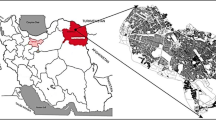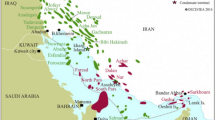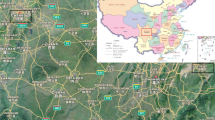Abstract
Reservoir water saturation is an important property of tight gas reservoirs. Improper calculation of water saturation leads to remarkable errors in following studies for development and production from reservoir. There are conventional methods to determine water saturation, but these methods suffer from poor generalization and cannot be applicable for various conditions of reservoirs. These methods also depend on core measurements. On the other hand, well log data are usually accessible for all the wells and provide continuous information across the well. Customary techniques are not fully capable to prepare meaningful results for predicting petrophysical properties, especially in presence of small data sets. In this regard, soft computing approaches have been used here. In this research, Support Vector Machine, Multilayer Perceptron Neural Network, Decision Tree Forest and Tree Boost methods have been employed to predict water saturation of Mesaverde tight gas sandstones located in Uinta Basin. Tree Boost and Decision Tree Forest are powerful predictors which have been applied in many research fields. Multilayer Perceptron is the most common neural network, and Support Vector Machine has been used in many petrophysical and reservoir studies. In this research, by using a small data set, the ability of these methods in predicting water saturation has been studied. Based on the data from four wells, two data set patterns were designed to evaluate training and generalization capabilities of methods. In each pattern, different combinations of well data were used. Three error indexes including correlation coefficient, average absolute error and root-mean-square error were used to compare the methods results. Results show that Support Vector Machine models perform better than other models across data sets, but there are some exceptions exhibiting better performance of Multilayer Perceptron Neural Network and Decision Tree Forest models. Correlation coefficient values vary from 0.6 to 0.8 for support vector machine, which exhibits better performance in comparison with other methods.












Similar content being viewed by others
Abbreviations
- AAE:
-
Average absolute error
- ANN:
-
Artificial neural network
- DT:
-
Sonic travel-time log
- ERM:
-
Empirical risk minimization
- GR:
-
Gamma ray log
- ILD:
-
Deep induction resistivity log
- MLP:
-
Multilayer perceptron
- MD:
-
Millidarcy
- NPHI:
-
Neutron porosity log
- OCR:
-
Optical character recognition
- r :
-
Correlation coefficient
- RBF:
-
Radial basis function
- RCAL:
-
Routine core analyses
- RHOB:
-
Bulk density log
- RMSE:
-
Root-mean-square
- SRM:
-
Structural risk minimization
- SV:
-
Support vector
- SVM:
-
Support vector machine
- SVR:
-
Support vector regression
- S w :
-
Water saturation
- VC:
-
Vapnik–Chervonenkis
References
Naik G (2003) Tight gas reservoirs—an unconventional natural energy source for the future. www.sublette-se.org/files/tight_gas.pdf. Accessado em. 1(07):2008
Zhou X, Morrow N, Ma S (2000) Interrelationship of wettability, initial water saturation, aging time, and oil recovery by spontaneous imbibition and waterflooding. SPE J 5(02):199–207
Khishvand M, Khamehchi E (2012) Nonlinear risk optimization approach to gas lift allocation optimization. Ind Eng Chem Res 51(6):2637–2643
Li K, Horne RN (2001) Characterization of spontaneous water imbibition into gas-saturated rocks. SPE J 6(04):375–384
Archie GE (1942) The electrical resistivity log as an aid in determining some reservoir characteristics. Trans AIME 146(1). doi:10.2118/942054-G
Poupon A, Leveaux J (1971) Evaluation of water saturation in shaly formations. In: SPWLA 12th annual logging symposium. Society of Petrophysicists and Well-Log Analysts
Anifowose F, Labadin J, Abdulraheem A (2013) Predicting petroleum reservoir properties from downhole sensor data using an ensemble model of neural networks. In: Proceedings of workshop on machine learning for sensory data analysis. ACM
Anifowose F, Labadin J, Abdulraheem A (2015) Improving the prediction of petroleum reservoir characterization with a stacked generalization ensemble model of support vector machines. Appl Soft Comput 26:483–496
Friedman J, Hastie T, Tibshirani R (2000) Additive logistic regression: a statistical view of boosting (with discussion and a rejoinder by the authors). Ann Stat 28(2):337–407
Haykin S (1994) Neural networks: a comprehensive foundation. Prentice Hall PTR, Englewood
Kecman V (2005) Support vector machines—an introduction. In: Support vector machines: theory and applications. Springer, Berlin Heidelberg, pp 1–47
Karimpouli S, Fathianpour N, Roohi J (2010) A new approach to improve neural networks’ algorithm in permeability prediction of petroleum reservoirs using supervised committee machine neural network (SCMNN). J Petrol Sci Eng 73(3):227–232
Lachnar J, Zangl G (2006) Treating uncertainties in reservoir-performance prediction with neural networks. J Petrol Technol 58(6):69–71
Lim J-S, Kim J (2004) Reservoir porosity and permeability estimation from well logs using fuzzy logic and neural networks. In: SPE Asia Pacific oil and gas conference and exhibition. Society of Petroleum Engineers
Mohaghegh S et al. (1996) Petroleum reservoir characterization with the aid of artificial neural networks. J Petrol Sci Eng 16(4):263–274
Mohaghegh S et al (1995) Design and development of an artificial neural network for estimation of formation permeability. SPE Comput Appl 7(6):151–154
Nikravesh M (2004) Soft computing-based computational intelligent for reservoir characterization. Expert Syst Appl 26(1):19–38
Olson TM (1998) Porosity and permeability prediction in low-permeability gas reservoirs from well logs using neural networks. In: Rocky Mountain regional meeting/low permeability reservoirs symposium
Ouadfeul S-A, Aliouane L (2012) Lithofacies classification using the multilayer perceptron and the self-organizing neural networks. In: Neural information processing. International conference on neural information processing. Springer, Berlin Heidelberg
Ouenes A (2000) Practical application of fuzzy logic and neural networks to fractured reservoir characterization. Comput Geosci 26(8):953–962
Rezaee M, Jafari A, Kazemzadeh E (2006) Relationships between permeability, porosity and pore throat size in carbonate rocks using regression analysis and neural networks. J Geophys Eng 3(4):370
Shokir EE-M (2004) Prediction of the hydrocarbon saturation in low resistivity formation via artificial neural network. In: SPE Asia Pacific conference on integrated modelling for asset management. Society of Petroleum Engineers
Singh S (2005) Permeability prediction using artificial neural network (ANN): a case study of Uinta Basin. In: SPE annual technical conference and exhibition. Society of Petroleum Engineers
Sun Q et al. (2001) Porosity from artificial neural network inversion for Bermejo field, Ecuador. In: SEG expanded abstracts. vol. 20
Tadayoni M, Valadkhani M (2012) New approach for the prediction of Klinkenberg permeability in situ for low permeability sandstone in tight gas reservoir. In: SPE middle east unconventional gas conference and exhibition. Society of Petroleum Engineers
Tahmasebi P, Hezarkhani A (2012) A fast and independent architecture of artificial neural network for permeability prediction. J Petrol Sci Eng 86:118–126
Wiener J, Rogers J, Moll B (1995) Predict permeability from wireline logs using neural networks. Petrol Eng Int 68(5)
Wong P, Jian F, Taggart I (1995) A critical comparison of neural networks and discriminant analysis in lithofacies, porosity and permeability predictions. J Petrol Geol 18(2):191–206
Zhang Y, Salisch HA, McPherson JG (1999) Application of neural networks to identify lithofacies from well logs*. Explor Geophys 30(1/2):45–49
Al-Anazi A, Gates I (2010) Support vector regression for porosity prediction in a heterogeneous reservoir: a comparative study. Comput Geosci 36(12):1494–1503
Alcocer Y, Rodrigues P (2001) Neural networks models for estimation of fluid properties. In: SPE Latin American and Caribbean Petroleum Engineering conference. Society of Petroleum Engineers
Aliouane L et al. (2012) Petrophysical parameters estimation from well-logs data using multilayer perceptron and radial basis function neural networks. In: Neural information processing. international conference on neural information processing. Springer, Berlin Heidelberg
Aminian K, Ameri S (2005) Application of artificial neural networks for reservoir characterization with limited data. J Petrol Sci Eng 49(3):212–222
Aminian K et al. (2003) Prediction of flow units and permeability using artificial neural networks. In: SPE western regional/AAPG pacific section joint meeting. Society of petroleum engineers
Asadisaghandi J, Tahmasebi P (2011) Comparative evaluation of back-propagation neural network learning algorithms and empirical correlations for prediction of oil PVT properties in Iran oilfields. J Petrol Sci Eng 78(2):464–475
Baneshi M et al (2013) Predicting log data by using artificial neural networks to approximate Petrophysical parameters of formation. Petrol Sci Technol 31(12):1238–1248
Baziar S et al (2014) Prediction of permeability in a tight gas reservoir by using three soft computing approaches: a comparative study. J Nat Gas Sci Eng 21:718–724
Zhao B et al (2006) Water saturation estimation using support vector machine. In: SEG/New Orleans 2006 annual meeting
Bhatt A (2002) Reservoir properties from well logs using neural networks
Boadu FK (2001) Predicting oil saturation from velocities using petrophysical models and artificial neural networks. J Petrol Sci Eng 30(3):143–154
Carrasquilla A, Silvab J, Flexac R (2008) Associating fuzzy logic, neural networks and multivariable statistic methodologies in the automatic identification of oil reservoir lithologies through well logs. Rev Geol 21(1):27–34
Hamada G, Elshafei M (2009) Neural network prediction of porosity and permeability of heterogeneous gas sand reservoirs. In: SPE Saudia Arabia section technical symposium. Society of Petroleum Engineers
Helle HB, Bhatt A, Ursin B (2001) Porosity and permeability prediction from wireline logs using artificial neural networks: a North Sea case study. Geophys Prospect 49(4):431–444
Huang Z et al (1996) Permeability prediction with artificial neural network modeling in the Venture gas field, offshore eastern Canada. Geophysics 61(2)
Irani R, Nasimi R (2011) Evolving neural network using real coded genetic algorithm for permeability estimation of the reservoir. Expert Syst Appl 38(8):9862–9866
Jamialahmadi M, Javadpour F (2000) Relationship of permeability, porosity and depth using an artificial neural network. J Petrol Sci Eng 26(1):235–239
Kapur L et al (1998) Facies prediction from core and log data using artificial neural network technology. In: SPWLA 39th annual logging symposium. Society of Petrophysicists and Well-Log Analysts
Naseri A, Nikazar M, Dehghani SM (2005) A correlation approach for prediction of crude oil viscosities. J Petrol Sci Eng 47(3):163–174
Rogers SJ et al (1992) Determination of lithology from well logs using a neural network (1). AAPG Bull 76(5):731–739
Khishvand M, Naseri A (2012) An artificial neural network approach to predict asphaltene deposition test result. Fluid Phase Equilib 329:32–41
Baziar S, Shahripour HB (2015) A novel correlation approach to predict total formation volume factor, using artificial intelligence
Hemmati-Sarapardeh A et al (2013) Toward reservoir oil viscosity correlation. Chem Eng Sci 90:53–68
Van Der Baan M, Jutten C (2000) Neural networks in geophysical applications. Geophysics 65(4):1032–1047
Wong PM, Gedeon TD, Taggart IJ (1995) An improved technique in porosity prediction: a neural network approach. IEEE Trans Geosci Remote Sens 33(4):971–980
Al-Bulushi N, Araujo M, Kraaijveld M (2007) Predicting water saturation using artificial neural networks (ANNS). Neural Netw 549(198):57
Basbug B, Karpyn ZT (2007) Estimation of permeability from porosity specific surface area and irreducible water saturation using an artificial neural network. In: Latin American and Caribbean Petroleum Engineering conference. Society of Petroleum Engineers
Goda HM, Maier H, Behrenbruch P (2005) The development of an optimal artificial neural network model for estimating initial water saturation-Australian reservoir. In: SPE Asia Pacific oil and gas conference and exhibition. Society of Petroleum Engineers
Goda HM, Maier H, Behrenbruch P (2007) Use of artificial intelligence techniques for predicting irreducible water saturation-Australian hydrocarbon basins. In: Asia Pacific oil and gas conference and exhibition. Society of Petroleum Engineers
Ibrahim MA, Potter DK (2004) Prediction of residual water saturation using genetically focused neural nets. In: SPE Asia Pacific oil and gas conference and exhibition. Society of Petroleum Engineers
Mollajan A, Memarian H (2013) Estimation of water saturation from petrophysical logs using radial basis function neural network. J Tethys 1(2):156–163
Vapnik VN, Chervonenkis AJ (1974) Theory of pattern recognition [in Russian]. Nauka, Moscow
Vapnik V (1982) Estimation of dependences based on empirical data. Springer, New York
Vapnik V (2000) The nature of statistical learning theory. Springer, New York
Mukherjee S, Osuna E, Girosi F (1997) Nonlinear prediction of chaotic time series using support vector machines. In: Proceedings of the 1997 IEEE workshop neural networks for signal processing [1997] VII. IEEE
Jeng J-T (2005) Hybrid approach of selecting hyperparameters of support vector machine for regression. IEEE Trans Syst Man Cybern Part B Cybern 36(3):699–709
Al-Anazi A, Gates I (2010) Support vector regression to predict porosity and permeability: effect of sample size. Comput Geosci 39:64–76
Al-Anazi A, Gates I (2010) On the capability of support vector machines to classify lithology from well logs. Nat Resour Res 19(2):125–139
Al-Anazi A, Gates ID (2010) A support vector machine algorithm to classify lithofacies and model permeability in heterogeneous reservoirs. Eng Geol 114(3–4):267–277
Al-anazi AF, Gates ID, Azaiez J (2009) Innovative data-driven permeability prediction in a heterogeneous reservoir. In: EUROPEC/EAGE conference and exhibition. Society of Petroleum Engineers
Anifowose FA, Ewenla AO, Eludiora SI (2011) Prediction of oil and gas reservoir properties using support vector machines. In: International petroleum technology conference. International Petroleum Technology Conference
Gholami R, Shahraki AR, Jamali Paghaleh M (2012) Prediction of hydrocarbon reservoirs permeability using support vector machine. Math Probl Eng 2012(2012). doi:10.1155/2012/670723
Nazari S, Kuzma HA, Rector III JW (2011) Predicting Permeability from well log data and core measurements using support vector machines. In: 2011 SEG annual meeting. Society of Exploration Geophysicists
Saffarzadeh S, Shadizadeh SR (2012) Reservoir rock permeability prediction using support vector regression in an Iranian oil field. J Geophys Eng 9(3):336
Yue Y, Wang J (2007) SVM method for predicting the thickness of sandstone. Appl Geophys 4(4):276–281
Kamari A et al (2013) Prediction of sour gas compressibility factor using an intelligent approach. Fuel Process Technol 116:209–216
Hemmati-Sarapardeh A et al (2014) Reservoir oil viscosity determination using a rigorous approach. Fuel 116:39–48
Mollajan A, Memarian H, Jalali M (2013) Prediction of reservoir water saturation using support vector regression in an iranian carbonate reservoir. In: 47th US rock mechanics/geomechanics symposium. American Rock Mechanics Association
Breiman L (2001) Decision-tree forests. Mach Learn 45(1):5–32
Schapire RE (1990) The strength of weak learnability. Mach Learn 5(2):197–227
Freund Y, Schapire RE (1997) A decision-theoretic generalization of on-line learning and an application to boosting. J Comput Syst Sci 55(1):119–139
Friedman JH (2002) Stochastic gradient boosting. Comput Stat Data Anal 38(4):367–378
Huber PJ (1964) Robust estimation of a location parameter. Ann Math Stat 35(1):73–101
Rumelhart DE, Hinton GE, Williams RJ (1985) Learning internal representations by error propagation. No ICS-8506. California University of San Diego La Jolla Institute for Cognitive Science
Rosenblatt F (1961) Principles of neurodynamics: perceptrons and the theory of brain mechanisms. Spartan Books, Washington
Basak D, Pal S, Patranabis DC (2007) Support vector regression. Neural Inf Process Lett Rev 11(10):203–224
Boser BE, Guyon IM, Vapnik VN (1992) A training algorithm for optimal margin classifiers. In: Proceedings of the fifth annual workshop on Computational learning theory. ACM
Guyon I, Boser B, Vapnik V (1996) Automatic capacity tuning of very large VC-dimension classifiers. Adv Neural Inf Process Syst (5):147–147
Cortes C, Vapnik V (1995) Support-vector networks. Mach learn 20(3):273–297
Schölkopf B, Burgest C, Vapnik V (1995) Extracting support data for a given task. In: Proceedings of the 1st international conference on knowledge discovery & data mining
Schölkopf B, Burges C, Vapnik V (1996) Incorporating invariances in support vector learning machines. In: Artificial neural networks ICANN 96. Springer pp 47–52
Vapnik V, Golowich SE, Smola A (1997) Support vector method for function approximation, regression estimation, and signal processing. Adv Neural Inf Process Syst (6):281–287
Vapnik V, Chervonenkis AJ (1964) A class of perceptrons. Autom Remote Control 25(1):1964
Vapnik V, Lerner A (1963) Generalized portrait method for pattern recognition. Autom Remote Control 24(6):774–780
Cumella SP, Scheevel J (2008) The influence of stratigraphy and rock mechanics on Mesaverde gas distribution. Piceance Basin, Colorado
Acknowledgements
The authors appreciate Habibollah Bavarsad Shahripour for his constructive comments and contributions in improving the paper.
Author information
Authors and Affiliations
Corresponding author
Rights and permissions
About this article
Cite this article
Baziar, S., Shahripour, H.B., Tadayoni, M. et al. Prediction of water saturation in a tight gas sandstone reservoir by using four intelligent methods: a comparative study. Neural Comput & Applic 30, 1171–1185 (2018). https://doi.org/10.1007/s00521-016-2729-2
Received:
Accepted:
Published:
Issue Date:
DOI: https://doi.org/10.1007/s00521-016-2729-2




